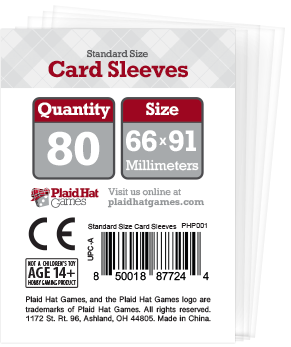Ashes: Card Types
Alterations and Reactions, Conjurations and Allies
 Welcome to Ashes: Noah Week at PlaidHatGames.com! Last week was Saria Week, preceded by Coal Week and Maeoni Week!
Welcome to Ashes: Noah Week at PlaidHatGames.com! Last week was Saria Week, preceded by Coal Week and Maeoni Week!
This article is part of our general overview of Ashes mechanics. Don't miss our placement overview, attacking/defending overview, or our phases of play overview.
Ashes is available for pre-order at the PlaidHatGames.com store. Pre-order today from our site and get $15 off the retail price! Order from PlaidHatGames.com and get a free Dimona Odinstar promo Phoenixborn, along with her exclusive Rayward Knight ally!
Hello Everyone!
I have been gearing up to get the next round of playtesting ready for the Ashes expansion. For any of you interested in playtesting, make sure you sign up for the Plaid Hat Corps. Plaid Hat Corps members will get a notice once it is ready for new playtesters!
Today we are discussing the types of cards in Ashes. Each card type offers its own unique advantages during game play that you will want to keep in mind during deck building and game play.
Ready Spells

Ready spells are cards that are placed on your spellboard that have either a constant effect or an effect that can be activated by paying a cost once on your spellboard. This card type will be one of the most common cards you utilize in the game. Ready spells offer effects that can be activated multiple times during the game. Setting up your spellboard with the right ready spells is key to your deck's strategy, making up your main re-usable options throughout the game.
Some ready spells can even become more powerful by being focused, so having multiple copies in your deck can have benefits even if you only need to activate the ability once per round.
Finally, ready spells be used to for the meditate side action. So if you need to change the face of a die, but don’t want to lose a card from your hand or draw pile, you can remove a ready spell from your spellboard instead.
Action Spells

Action spells are cards played during your turn for a one-time effect. Action spells, unlike most ready spells, trigger immediately on the turn they're played, and so are a great way to get a quick one-up on your opponent. Action spell effects are typically more powerful than ready spells but don’t have the advantage of being re-used during the game, since most are placed in your discard pile after use.
Reaction Spells

Reaction spells are cards that can be played after a specific event has taken place during the game. Reaction spells can be used outside of your turn to take immediate revenge on your opponent, defend yourself from your opponents actions, or set yourself up for a more powerful combo action during your turn.
You can only play one reaction spell per turn, so make sure you choose wisely which reactions you want to play at which times. These cards are great ways to gain an advantage on your opponent and turn the tables on them when they aren't expecting it.
Alteration Spells

Alteration spells are spells that are typically played onto to units to improve or decrease their status or add or remove an ability. Alteration spells are great ways to make your units your own, or deal with units that are annoying you. Many alteration spells also have the respark ability, so you can pay to bring them back to your hand when they would be discarded, utilizing them again and again.
Ally Cards

Ally cards are units that you can play on your battlefield to attack your foes. These units offer the advantage of typically being more powerful than conjuration units and have the advantage of speed by coming straight out of your hand. Allies are typically equipped with unique abilities that can offer great strategies to your deck builds.
Conjuration Cards


Conjuration cards are a lot like allies in that they are units that you can play on your battlefield to attack your foes. The difference between these units and allies are that they do not take up space in your draw pile and require another card effect to summon them onto your battlefield. Conjurations are also immortal in a sense since they return to your conjuration pile to be summoned again if they are destroyed and thus are not susceptible to being discarded and potentially removed from the game.
Most of the pre-built decks in the game offer 1 or more of these card types in their build to get you used to the different card types. Experimenting with combining these different card types will help you learn more about the game and will lead to creating strategies that are your very own.
Next week we will discuss the multiplayer version of the game and some of the differences it offers from your standard duel.
Until then, tune in tomorrow for part 1 on Noah Redmoon, the master of shadows!
Thanks for reading!
Isaac
Game Overview Previews: Phases of Play, Attacking/Defending, Placement, Card Types, Dice Powers, Multiplayer and Drafting
Maeoni Previews: Part 1, Part 2, Part 3, Part 4
Coal Previews: Part 1, Part 2, Part 3, Part 4
Saria Previews: Part 1, Part 2, Part 3, Part 4
Noah Previews: Part 1, Part 2, Part 3, Part 4
Jessa Previews: Part 1, Part 2, Part 3, Part 4
Aradel Previews: Part 1, Part 2, Part 3, Part 4
Click here to pre-order Ashes: Rise of the Phoenixborn and get a $15 pre-order discount as well as the Dimona Odinstar Promo Pack.
Written by Isaac Vega, designer of Ashes: Rise of the Phoenixborn and other Plaid Hat Games (Dead of Winter, BioShock, City of Remnants, and Video Game High School)


